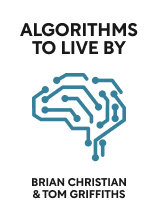

This article is an excerpt from the Shortform book guide to "Algorithms to Live By" by Brian Christian and Tom Griffiths. Shortform has the world's best summaries and analyses of books you should be reading.
Like this article? Sign up for a free trial here .
How do you make an informed decision when there are just too many variables to consider? What about variables that are yet unknown?
Whenever you make a decision, you’re using all the existing data of your life so far to predict what choice will result in the best outcome. But as statistics tell us, taking too many variables into account results in faulty predictions. That’s why, sometimes, the best way to make a complex decision is to make a less informed decision.
Here is why you should make less informed decisions.
To Make Better Decisions, Consider Less Information
When you are faced with a decision that involves too many variables, you may be better off making a less informed decision. Base your decisions on only the most relevant facts and ignore everything else to avoid jumping to unfounded conclusions. In their book Algorithms to Live By, Christian and Griffiths propose several solutions for making complex decisions:
Rule #1: Choose the Simplest Solution Unless You Can Justify Complexity
Christian and Griffiths support their argument by citing Occam’s razor—a well-known principle stating that the simplest hypotheses are most likely to be true and the simplest solutions are often the best. They argue that this principle should be a key influence on your decision-making strategy: Cast more doubt on decisions that require a complex explanation to justify them.
For example, if your son gets bad grades, but you suspect that all his teachers are conspiring to keep him back a grade and want to make a complaint to the school board, you’re probably overfitting. You’re attributing too much significance to the wrong evidence: the personalities of his teachers. The simpler explanation—that your son isn’t studying very hard—is more likely to be true.
| Misusing Occam’s Razor Science writer Philip Ball objects to the way Christian and Griffiths portray Occam’s razor. In his eyes, a key distinction needs to be made when utilizing the principle: The simplest explanation doesn’t necessarily have a greater chance of being correct, since many parts of the universe work in very complicated ways. Rather, simple explanations are valuable because they omit small complexities that don’t matter, conceptualizing the intricate world in a simplification that’s less accurate to reality but has more practical use. Ball argues that this distinction is important because he doesn’t want us placing undue faith in simple explanations. In reality, science isn’t a straightforward path toward simplicity and clarity—it’s a complicated web of theories that never quite explain everything about our complex universe. We shouldn’t be afraid to challenge theories just because they’re elegantly simple. Sometimes, the only way to advance our understanding is by getting more complex. |
When You Can Use Complex Solutions
Christian and Griffiths make it clear: This isn’t to say that you should never embrace complex solutions, just that you should seek out more supporting evidence before committing to them. With this in mind, they argue that the most reliable form of evidence is found through a process called “cross-validation.”
The authors explain that in statistics and machine learning, cross-validation is the practice of testing a model’s predictive power. By creating a model from a set of data and then making sure it can accurately predict data points it hasn’t seen yet, you can verify that it accurately interpreted the first set of data.
| How to Use Cross-Validation Christian and Griffiths don’t go into detail on how you can utilize cross-validation in your everyday life. We can frame this process as simply: “Pay attention to the outcomes of your decisions.” Every time something happens that you didn’t expect (a data point that falls outside of your mental model), question whether one of your beliefs is incorrect. If you use a complex justification to talk yourself into making a specific decision, see this as a red flag and put extra scrutiny on whether or not things turn out as you anticipated. Most people use complex explanations to rationalize as much as necessary to confirm their preexisting beliefs—don’t fall into this trap. |
Rule #2: When in Doubt, Decide Sooner
One strategy that Christian and Griffiths offer to combat indecision is to make your decisions sooner rather than later. This prevents you from overthinking and adding complexity that is likely to mislead you. More often than not, the first factors we consider when making a decision are the ones that will have the greatest impact on the outcome.
Imagine someone you know well asks you on a date. If your first instinct is to say no, that’s probably the right call. In those first few seconds, you only have time to evaluate the most important factors—for instance, whether or not you’re attracted to and respect them. Given time, you could likely rationalize saying yes by considering less important details like their income level or how polite they are, but you would be falling victim to overfitting.
| Split-Second Decisions In Blink, Malcolm Gladwell takes this argument further, writing that in many cases, the best way to make decisions is by only thinking for a fraction of a second. He claims that humans instantly intuit a significant amount of accurate information about anything they come in contact with, a process psychologists call “thin-slicing.” Thin-slicing works so well because our brains can instantly filter out information they deem unhelpful. If you override this instinct and give yourself the time to consciously mull over a decision, you’ll frequently focus too much on the wrong details. Once again, we’re faced with the paradox that trusting your gut is the closest way we have to make decisions like finely-tuned machines. |

———End of Preview———
Like what you just read? Read the rest of the world's best book summary and analysis of Brian Christian and Tom Griffiths's "Algorithms to Live By" at Shortform .
Here's what you'll find in our full Algorithms to Live By summary :
- How to schedule your to-do list like a computer
- Why making random decisions is sometimes the smartest thing to do
- Why you should reject the first 37% of positions in your job search






